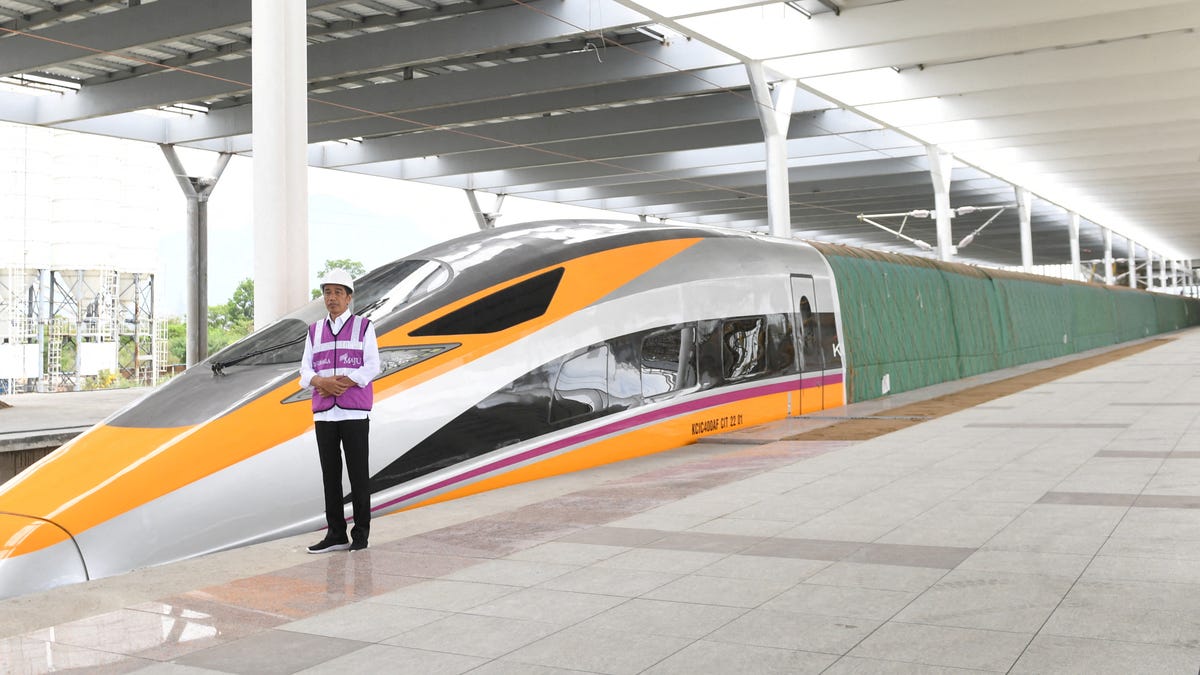Indonesia’s first high-speed train, called Whoosh, has officially started operating on October 1st. This groundbreaking service is the first of its kind not only in Indonesia but also in Southeast Asia, making it a significant achievement for Indonesian President Joko “Jokowi” Widodo. The launch of Whoosh also represents a milestone for China’s Belt and Road Initiative (BRI), as they provided the financial backing of $7.3 billion for the project.
Covering a distance of 88.4 miles (142.3 km), Whoosh connects the Indonesian capital city of Jakarta to Bandung, the country’s second most populous metropolitan hub in West Java. The bullet train can reach speeds of about 217 mph (350 kph), reducing travel time between the two cities from three hours to just 36 minutes. The name “Whoosh” is an acronym for “Waktu Hemat, Operasi Optimal, Sistem Handal,” which translates to “time-saving, optimal operation, reliable system” in Indonesian.
The development of Whoosh would not have been possible without funding from China. In 2015, China won a bid against Japan, known for its renowned Shinkansen train service, to secure the contract for the Indonesian rail system. This bidding war was both a financial and political contest, with China ultimately emerging victorious due to their business-centric approach. Japan’s Chief Cabinet Secretary at the time, Suga Yoshihide, expressed disappointment and called the outcome “difficult to understand” and “extremely regrettable.”
For China, winning the contract was a significant achievement. The new train is operated by Kereta Cepat Indonesia China (KCIC), a joint venture between Jakarta and Beijing. Whoosh represents China’s first completed high-speed rail contract abroad, displaying their growing geopolitical influence through the Belt and Road Initiative.
Since the creation of the BRI in 2013, Chinese President Xi Jinping has seen railways as a way to expand not only China’s commerce but also its currency and tourism. Xi has emphasized the importance of infrastructure connectivity and cooperation for development. Whoosh is an addition to the vast international network created by China, demonstrating their regional influence. While not all projects have been successful, China continues to forge ahead with their global railway projects, including ventures in Laos, Europe, and Africa.
China Railway, the state-owned passenger and freight rail corporation, had fixed asset investments of $51.9 billion from January to July 2023, a 7% increase compared to the previous year. China aims to build 3,000 km (1,864 miles) of railway track in 2023. The total investment in transport projects under the Belt and Road Initiative from 2005-2023 amounts to $227.85 billion. Moreover, China has the most extensive domestic high-speed rail system in the world, covering a distance of 37,900 km (23,550 miles).
In conclusion, the launch of Indonesia’s first high-speed train, Whoosh, marks a significant achievement for the country and shows China’s growing global influence through their Belt and Road Initiative. This is just one example of China’s extensive railway projects around the world, contributing to their soft power strategy and economic growth.
Denial of responsibility! Vigour Times is an automatic aggregator of Global media. In each content, the hyperlink to the primary source is specified. All trademarks belong to their rightful owners, and all materials to their authors. For any complaint, please reach us at – [email protected]. We will take necessary action within 24 hours.


